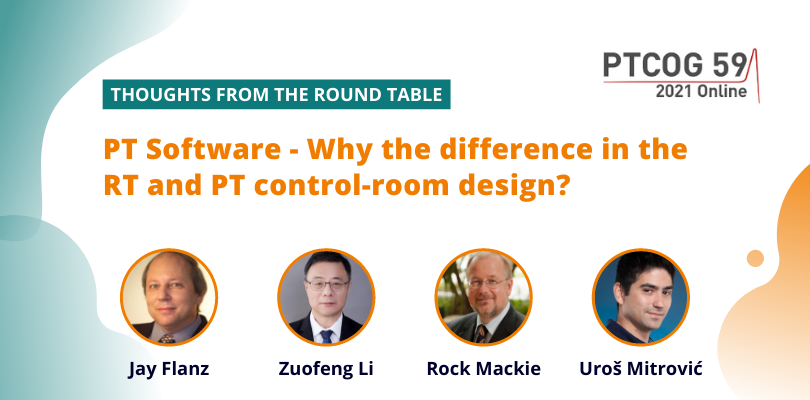PT Software – Why do RT and PT devices differ so much in control-room design?

Workflows are alike
So it is interesting to take a closer look at the workflow perspective. Workflows tend to be quite alike in conventional radiation therapy and particle therapy. However, when you today enter a PT or RT facility, you can see a significant difference in control room design between the two types of radiation therapy. Why is there this contrast, and what can developers of PT systems learn from it? T. Rockwell (“Rock”) Mackie tries to answer this and give his opinion on other matters, too.
Rock sees the fundamental problem deriving from the integration of various subsystems into a complete particle therapy device. What is, in essence being done is adding a control system onto a control system and then joining the latter to another control system. A human has then to interact with all the mentioned control systems, and a person can only “look at one monitor at a time”.
Integrated conventional radiation therapy systems have no more than two monitors, one for interacting with the control aspects, such as patient and actions selection and image display. In fact, as Rock underlines, the image display should also include just a conventional camera display. Even regarding the patient, one can only look at one thing at once – and that is often good. Some assume that if there are several therapists present, each one of them could be looking at a different aspect regarding the patient’s treatment.
Good workflow organisation is like driving a car
Rock believes, to the contrary, that everyone should be engaged in looking nearly at the same thing that’s relevant at that instant in time. He compares this to operating an automobile. The latter is a good example of a well-known workflow in which an individual performs tasks one at a time, such as looking at the approaching, occasionally checking different views, glancing into the rear-view mirror and the side mirrors. Nevertheless, inherently the attention of the operator is on one thing at a time. With PT, the goal would be to design systems that innately treat the therapists as individuals who give their full attention to consecutive single tasks.
The other fundamental problem with proton radiation systems is that they are – regarding at least workflow management and even treatment planning – still treated as if they were fundamentally different from conventional X-ray radiation therapy modality.
The blessing and damnation of the Bragg Peak
Rock says it all revolves around the fact that in proton therapy, the Bragg peak is where the very high dose (concentration of energy) is deposited in tissue. He warns that in many cases, we are still not able to position the Bragg peak with the accuracy that would allow us to perform more conventional treatment planning.
To solve some of the problems in proton radiation therapy, he says, we need to think of the holistic picture. We should determine how we can use effectively this high-resolution structure called the Bragg peak – and not just brag about it.
There are absolutely ways to improve PT. We have to start with full integration and avoid having disparate control systems trying to communicate and coordinate with each other. We have to plan outstanding architecture and simultaneously have good unit-based software control. We should also not forget about fully integrated software control. In the end, it will take some art, some science, and a huge focus on architecture.
At the same time, Rock sees promising developments, such as Proton VDA’s proton radiography system (pRAD) set up at the Northwestern Medicine Chicago Proton Center. People from the centre have shown that you can control the right Bragg peak within a millimetre based on proton radiography for the brain, head, neck, and thorax.
If you’d rather listen to the above, watch the video clip from the round table:
Read the rest of the series …
This is the second article in a series of blogs dealing with the challenges of developing good software for particle therapy systems and is based on the PTCOG 59 round table “SOFTware: the HARD part of proton therapy“.
- Part 1: “PT Software – The importance of subsystems integration for device performance“
- Part 3: “PT Software – Safety Systems”
- Part 4: Next time, we will look at PT system upgrades and the contribution of software to PT improvement.
Subscribe to our newsletter
What kind of content are you interested in?





